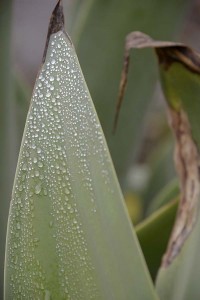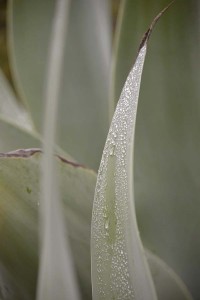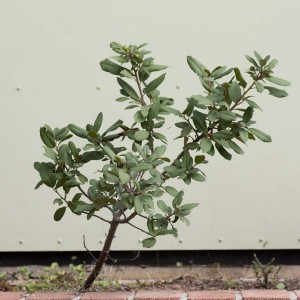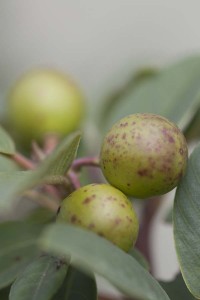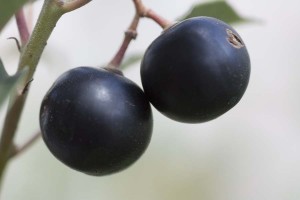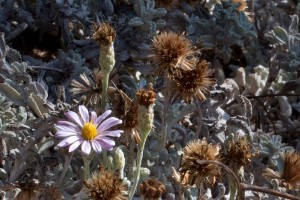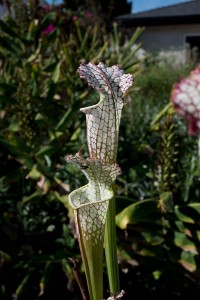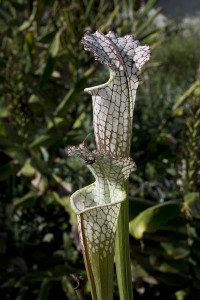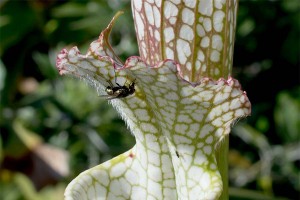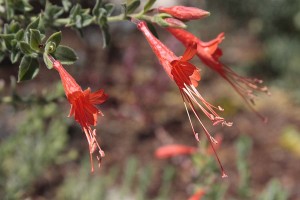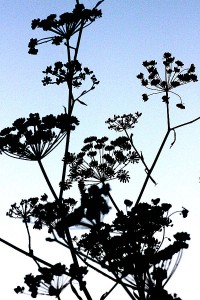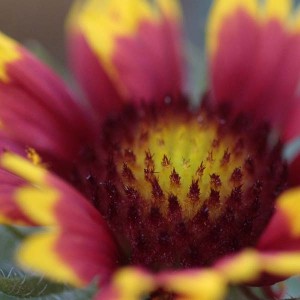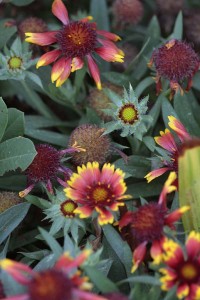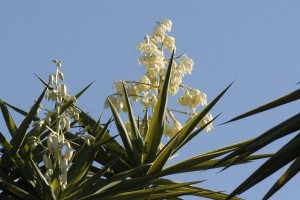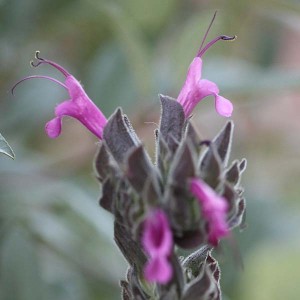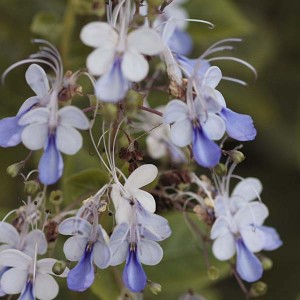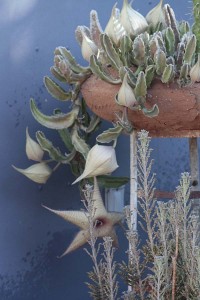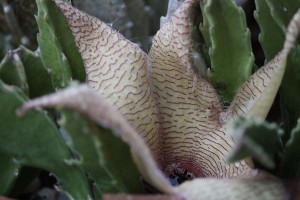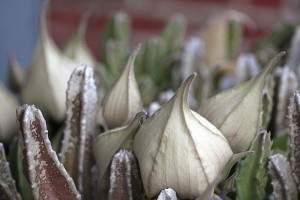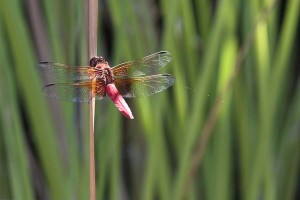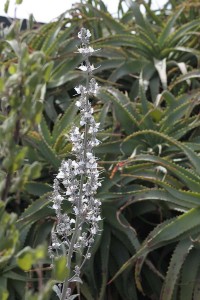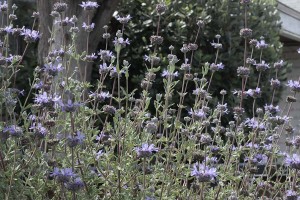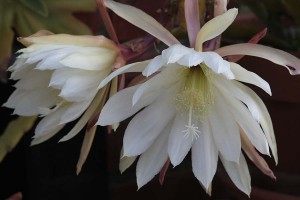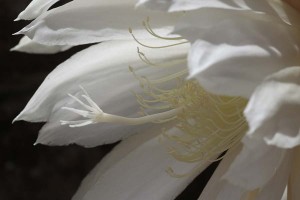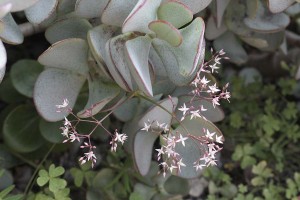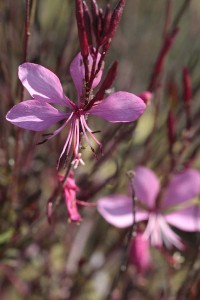After posting on Nasher Sculpture Center’s Sculpture garden–very much a rarefied 1%er’s kind of garden–it’s really comforting to return to the garden I call home. It’s April 15 in this 99%er’s garden, and time for this months Garden Blogger’s Bloom Day meme, hosted of Carol at May Dreams Gardens.
Every time I do one of these posts I worry that I’m showing you the same things. But since I stare at these plants for hours on end I hope you don’t mind the repeat appearances of some of the things that are still blooming. But in addition to the forever bloomers there are a lot of new things starting up this month.
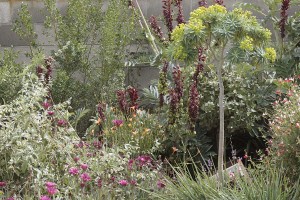
Here’s an overview of the irrigated raised bed. There’s a native coyote bush in the back that I raised from seed, and it seems fine with this somewhat moist location. In front of it are some blooming exotics: a potted Euphorbia lambii with its chartreuse flowers, an Arctotis hybrid “Big Magenta” in the lower left, Salvia microphylla ‘Hot Lips’ to the right and a honey bush (Melianthus major) in the background, right, with its dark red bracts.

Euphorbia lambii detail.
There’s a lot from California (or very nearby) in bloom:

Verbena lilacina (from nearby in Mexico)

Blue-eyed grass (Sisyrinchium bellum) livening up the edges of the veggie plantings.
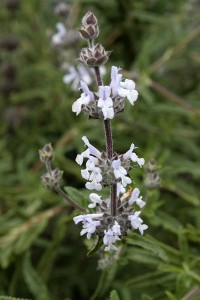
Some of the last flowers on the black sage, Salvia mellifera.
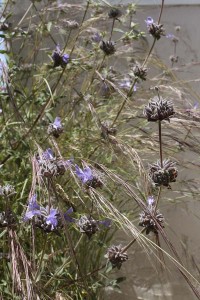
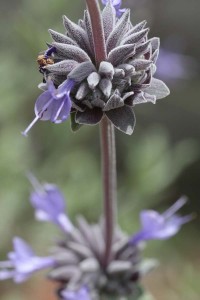
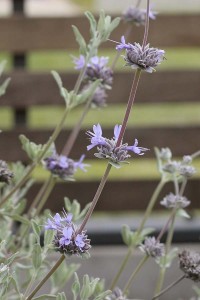
Takes 1-3 of Salvia clevelandii ‘Winnifred Gilman.”

A red monkeyflower seedling from a cultivar that died a couple of years ago.
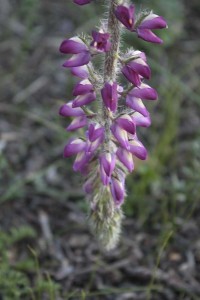
The local stinging lupine, Lupinus hirsutissimus.
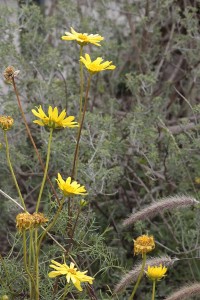
The local coastal sea daisy, previously called a coreopsis, I’m trying to get used to its new name, Leptosyne maritima.
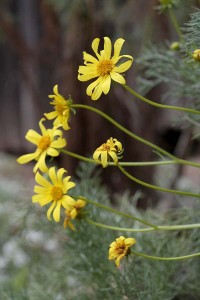
Another ex-coreopsis, Leptosyne gigantea.

The local bladderpod, Isomeris arborea, with one of its bladder-like seedpods to the right.
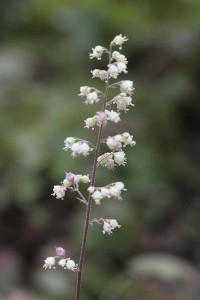
Island alum root doesn’t so incredibly well for me. I suspect that I’m not watering it enough to make it bloom like mad like I’ve seen it do locally.

A fremontia that we have in East County, Fremontodendron mexicanum. It’s a plant that’s been imprisoned in a gallon pot from a plant sale last fall, waiting until I figure out where to put a really big plant.

The giant island buckwheat (Eriogonum giganteum) in bud. Last year the gophers got to it. I thought it was doomed. Looks like it’s pulling through.

San Miguel Island buckwheat (Eriogonum arborescens).
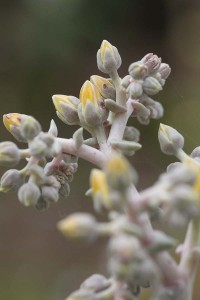
A succulent dudleya that you find out in the eastern parts of the county, Dudleya saxosa ssp. aloides.

Carpenteria california, in bloom since December.
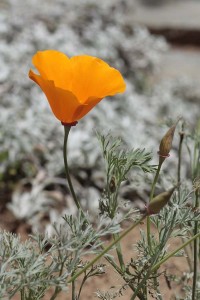
The California poppies started up last month. They’re close to peaking.
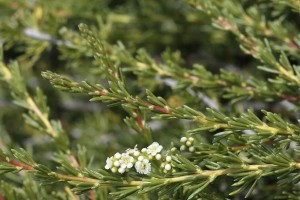
This plant, a spreading form of chamise (Adenostoma fasciculatum) known as ‘Nicholas.”
And from other places we have:
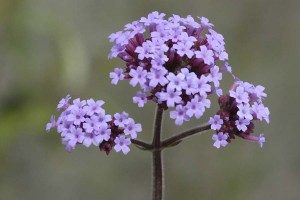
Verbena bonariensis.
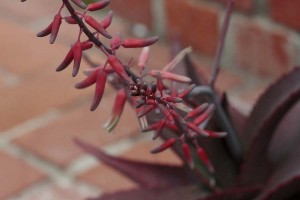
An unknown red aloe or aloe hybrid.
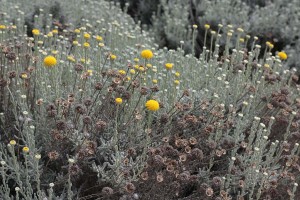
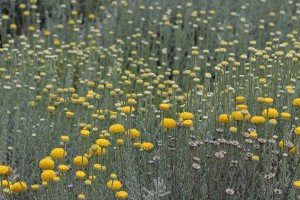
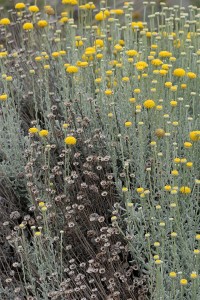
Three takes on santolina, S. chamaecyparissus, more in bloom than last month.
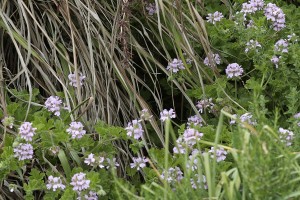
The rose geranium in the herb garden is a total monster. Pretty in lavender-pink, though. And it’s pretty easy to pull up.

Yah, yah, yah, this protea all over again…

You’re witness to the final moments of this Mexican evening primrose. It’s a noxious weed in the garden, and I pulled it up five seconds after I put down the camera.

Nile, oblivious to all my weeding and survey work in the garden.
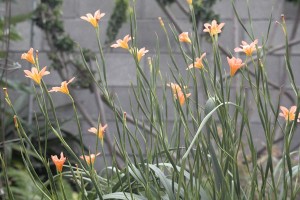
Another weedy plant, Homeria collina. Not nearly as bad as the previous one, so it usually gets to live and reproduce in my garden unless it comes up in a seriously bad spot.
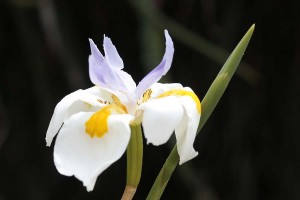
Fortnight iris, Dietes iridioides. Another pretty but really weedy plant. It’s still coming up from seed left by plants a decade ago. This is a flower on the one plant that gets to live.


A couple of takes on blooming graptopetalums.
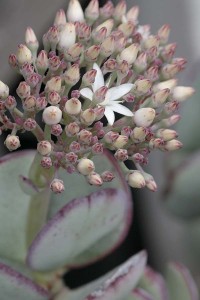
Silver jade, Crassula argentea, just coming into bloom.

But of the exotics, the most splashy right now are the American pitcher plants, the sarracenia. These carnivorous plants have leaves modified into the bug-catching tubes that are often mistaken for flowers. But you’ll see the floppy mop-top flowers that these guys produce.
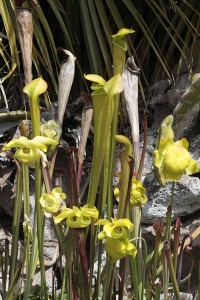
S. alata and flowers.
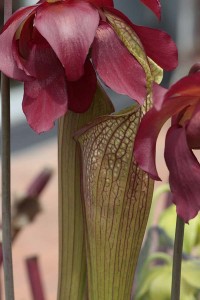
A natural hybrid, S. ‘Leah Wilkerson,” flowers and new pitcher.
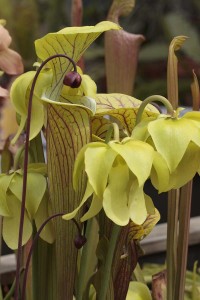
A hybrid of S. flava by S. oreophila. The pitchers are just opening, and will turn a much more intense combination of red and yellow.
Happy Bloomday, every’all. For more gardens check out Carol’s April 2012 Bloomday post [ right here ].


